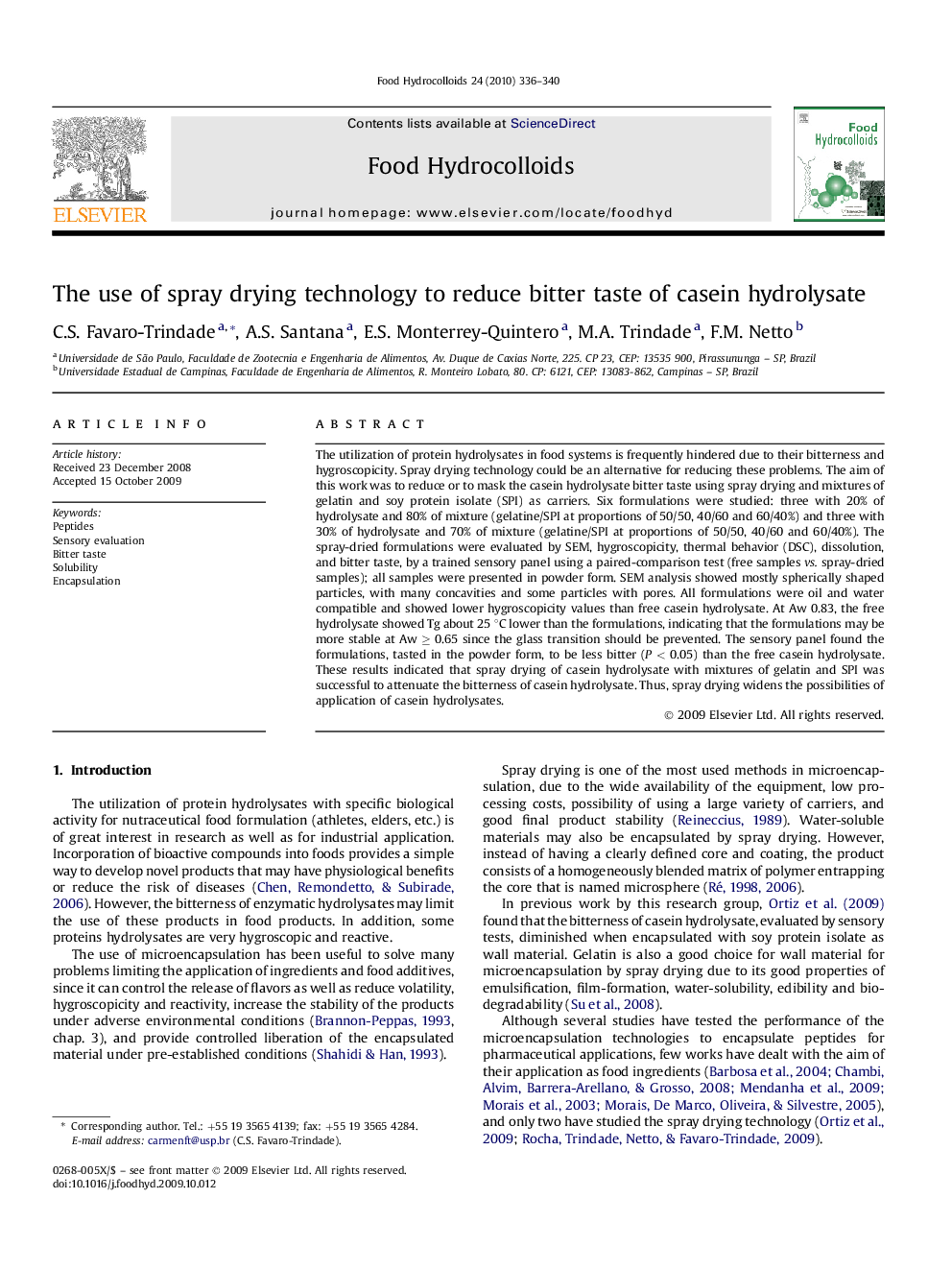| Article ID | Journal | Published Year | Pages | File Type |
|---|---|---|---|---|
| 604602 | Food Hydrocolloids | 2010 | 5 Pages |
The utilization of protein hydrolysates in food systems is frequently hindered due to their bitterness and hygroscopicity. Spray drying technology could be an alternative for reducing these problems. The aim of this work was to reduce or to mask the casein hydrolysate bitter taste using spray drying and mixtures of gelatin and soy protein isolate (SPI) as carriers. Six formulations were studied: three with 20% of hydrolysate and 80% of mixture (gelatine/SPI at proportions of 50/50, 40/60 and 60/40%) and three with 30% of hydrolysate and 70% of mixture (gelatine/SPI at proportions of 50/50, 40/60 and 60/40%). The spray-dried formulations were evaluated by SEM, hygroscopicity, thermal behavior (DSC), dissolution, and bitter taste, by a trained sensory panel using a paired-comparison test (free samples vs. spray-dried samples); all samples were presented in powder form. SEM analysis showed mostly spherically shaped particles, with many concavities and some particles with pores. All formulations were oil and water compatible and showed lower hygroscopicity values than free casein hydrolysate. At Aw 0.83, the free hydrolysate showed Tg about 25 °C lower than the formulations, indicating that the formulations may be more stable at Aw ≥ 0.65 since the glass transition should be prevented. The sensory panel found the formulations, tasted in the powder form, to be less bitter (P < 0.05) than the free casein hydrolysate. These results indicated that spray drying of casein hydrolysate with mixtures of gelatin and SPI was successful to attenuate the bitterness of casein hydrolysate. Thus, spray drying widens the possibilities of application of casein hydrolysates.
Graphical abstractFigure optionsDownload full-size imageDownload as PowerPoint slide
